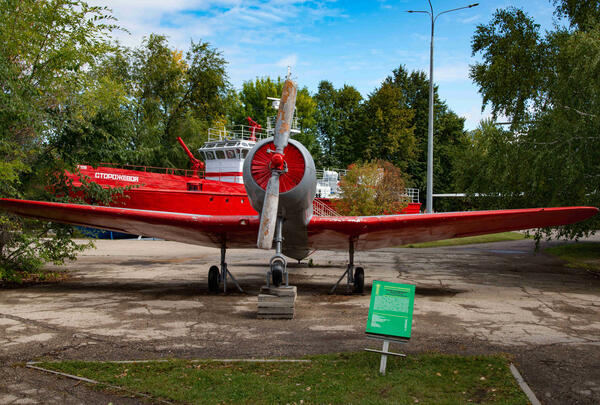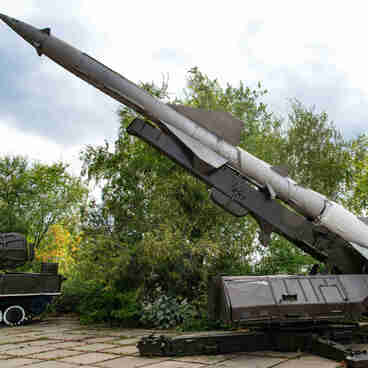After the Great Patriotic War, the UT-2 aircraft and the U-2 biplane were replaced by the two-seat Yak-18 aircraft for primary training. The first two aircraft were designed by Nikolai Nikolaevich Polikarpov, the latter by Konstantin Vladimirovich Sinelshchikov.
The Yak-18A trainer aircraft was developed on the basis of the Yak-18U in the design bureau of Plant No. 115 (Yakovlev Design Bureau) in 1956. It was distinguished from its predecessor by a more powerful engine. In addition, the flight performance characteristics were better.
Since 1946, for 30 years, the Yak-18 and all its modifications were the main models of Soviet sport aviation. Its equipment made it possible to fly day and night in normal weather conditions. The cabins of the instructor and the trainee were identical design-wise to those in fighter aircraft of that time.
The Yak-18A two-seat monoplane with a cantilever low wing had retractable tricycle landing gear and a two-bladed propeller. The aircraft had dual controls. The control sticks installed in the front and rear cabins were interlocked by connecting rods.
The control circuit of the elevator was of a mixed type. The aircraft used a rudder control cable system. The pilot raised ailerons with a control wheel. The radio equipment of the aircraft consisted of an R-800 radio station, an ARK-5 automatic radio compass, an MRP-56P marker radio receiver and an SPU-2 aircraft intercom.
The Yak-18A had been manufactured until the first half of 1960. The Yak-18A became the last trainer aircraft of the Air Forces with a piston engine. It was replaced by the L-29 jet aircraft manufactured in Czechoslovakia.
In flying clubs and DOSAAF training centers (the Volunteer Society for Cooperation with the Army, Aviation, and Navy; a paramilitary sport organization in the Soviet Union), the Yak-18 and its modifications were used as primary training aircraft. They also served to set records. In total, they were awarded 9 official world and 14 All-Union titles in range, speed and altitude categories in the class of lightweight aircraft. The Yak-18 training aircraft was exported to many countries and mass-produced in China under the designation CJ-6.
The Yak-18A trainer aircraft was developed on the basis of the Yak-18U in the design bureau of Plant No. 115 (Yakovlev Design Bureau) in 1956. It was distinguished from its predecessor by a more powerful engine. In addition, the flight performance characteristics were better.
Since 1946, for 30 years, the Yak-18 and all its modifications were the main models of Soviet sport aviation. Its equipment made it possible to fly day and night in normal weather conditions. The cabins of the instructor and the trainee were identical design-wise to those in fighter aircraft of that time.
The Yak-18A two-seat monoplane with a cantilever low wing had retractable tricycle landing gear and a two-bladed propeller. The aircraft had dual controls. The control sticks installed in the front and rear cabins were interlocked by connecting rods.
The control circuit of the elevator was of a mixed type. The aircraft used a rudder control cable system. The pilot raised ailerons with a control wheel. The radio equipment of the aircraft consisted of an R-800 radio station, an ARK-5 automatic radio compass, an MRP-56P marker radio receiver and an SPU-2 aircraft intercom.
The Yak-18A had been manufactured until the first half of 1960. The Yak-18A became the last trainer aircraft of the Air Forces with a piston engine. It was replaced by the L-29 jet aircraft manufactured in Czechoslovakia.
In flying clubs and DOSAAF training centers (the Volunteer Society for Cooperation with the Army, Aviation, and Navy; a paramilitary sport organization in the Soviet Union), the Yak-18 and its modifications were used as primary training aircraft. They also served to set records. In total, they were awarded 9 official world and 14 All-Union titles in range, speed and altitude categories in the class of lightweight aircraft. The Yak-18 training aircraft was exported to many countries and mass-produced in China under the designation CJ-6.





